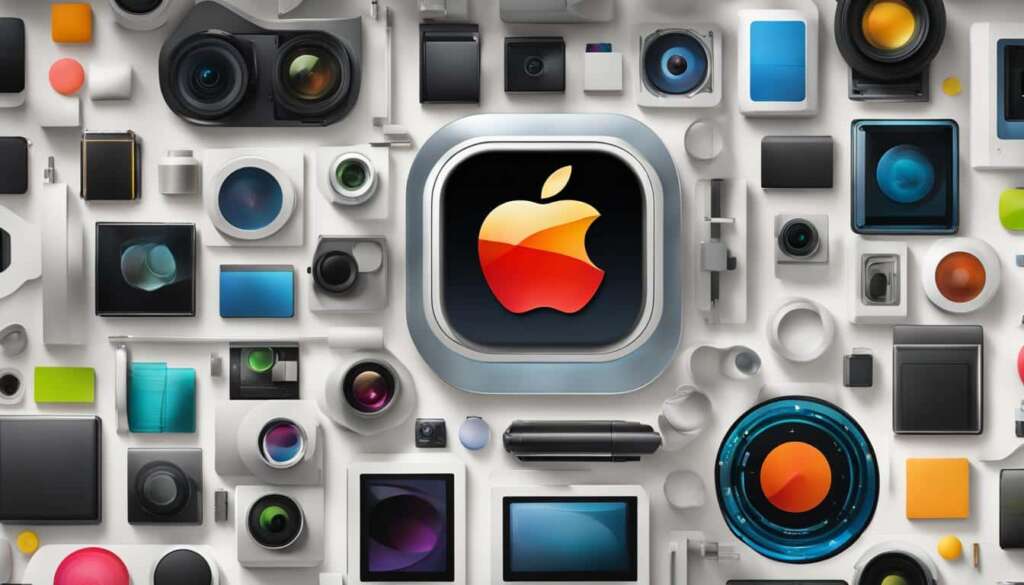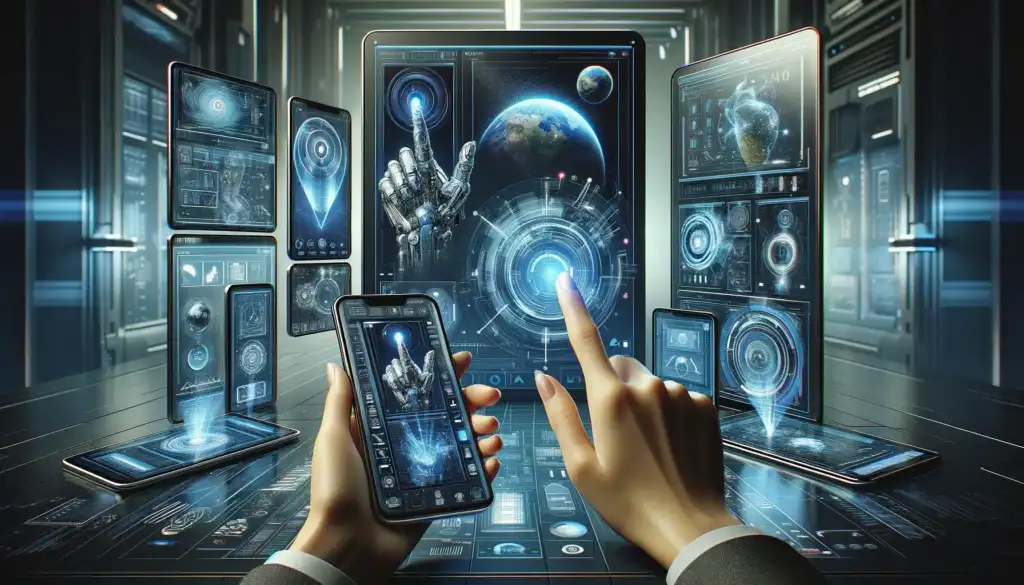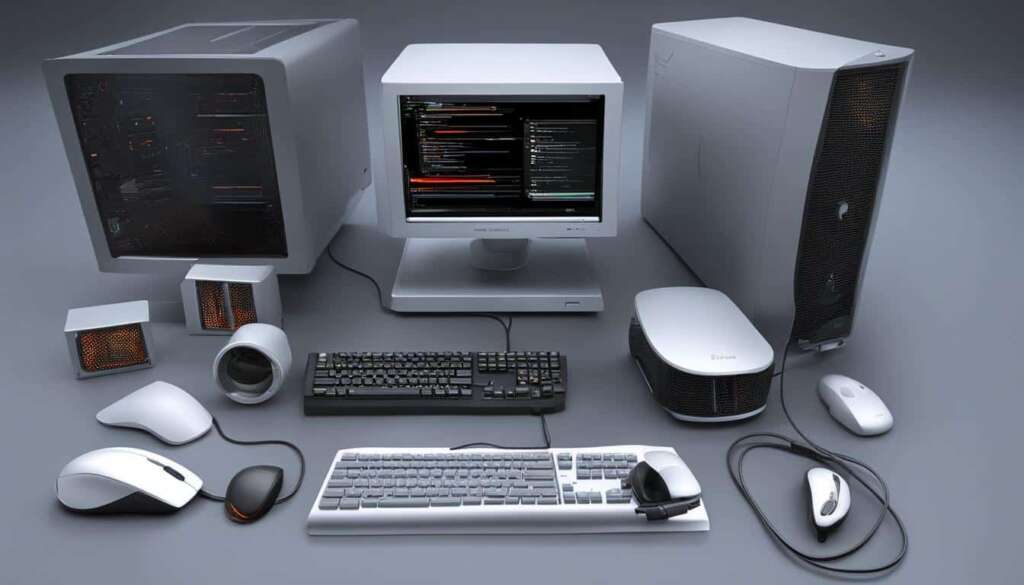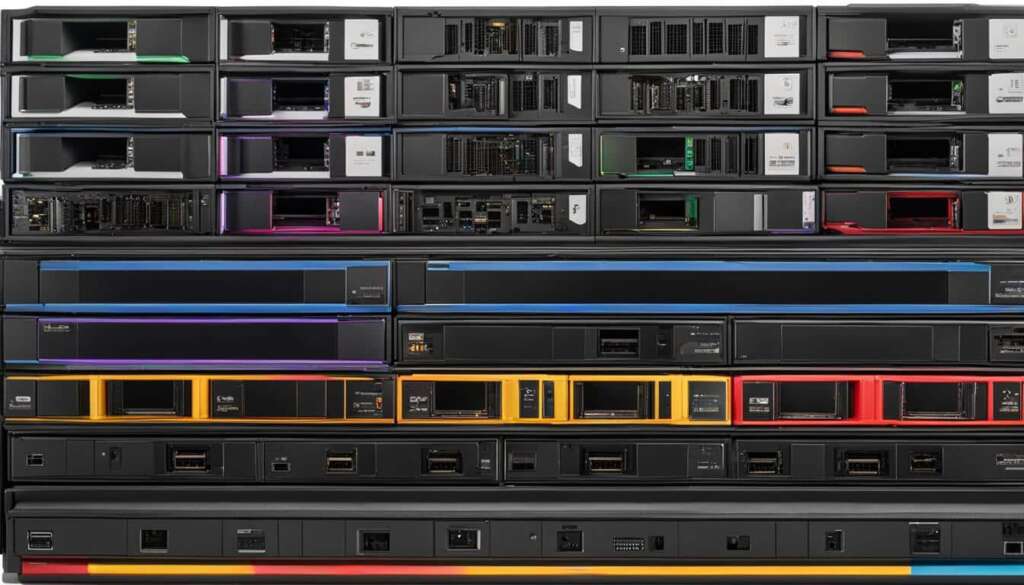Table of Contents
Are you ready to delve into the world of Apple computer technology? In this article, we will explore the groundbreaking innovations brought to you by Apple. From their state-of-the-art hardware to their cutting-edge software, Apple has consistently pushed the boundaries of technology.
One of their latest creations is the awe-inspiring Apple Vision Pro. This spatial computer seamlessly merges digital content with the physical world, revolutionizing the way we interact with technology. With the world’s first spatial operating system, visionOS, controlled by your eyes, hands, and voice, Apple Vision Pro takes personal computing to a whole new level.
Featuring an ultra-high-resolution display system with 23 million pixels across two displays, Apple Vision Pro provides a stunning visual experience. Whether you’re being productive, enjoying entertainment, or capturing memories, this innovative device will enhance every aspect of your digital life.
With visionOS, apps come to life around you, adapting to lighting conditions and scaling perfectly to your needs. Experience immersive environments and interactive FaceTime calls like never before. And with the all-new App Store, discovering exciting new apps is easier than ever.
Built on the foundation of macOS, iOS, and iPadOS, visionOS is the future of spatial computing. The breakthrough design of Apple Vision Pro incorporates advanced materials for optimal performance, mobility, and wearability.
Stay tuned as we explore the incredible journey of Apple computer technology, from their humble beginnings to their status as a global tech giant. Discover how their organizational model fosters innovation and the profound impact their innovations have had on the tech industry. Join us on this exciting exploration of all things Apple.
The History of Apple Computer: From Small Beginnings to Tech Giant
In the early days of Apple, two visionaries—Steve Jobs and Steve Wozniak—came together with a shared passion for electronics. They attended meetings of the Homebrew Computer Club, a gathering of computer enthusiasts, where they found inspiration and motivation to create their own computers.
Their first creation was the Apple I, a bare-bones circuit board that they sold to hobbyists and electronics enthusiasts. The success of the Apple I led to the development of the Apple II, a complete computer system that quickly became a bestseller and established Apple as a leading player in the personal computer industry.
In the years that followed, Apple introduced a series of groundbreaking products. The Apple III, released in 1980, aimed to appeal to business users with its advanced technology and sophisticated design. The Lisa, launched in 1983, featured a graphical user interface (GUI) and marked a significant step forward in the evolution of personal computing.
However, it was the release of the Macintosh in 1984 that truly catapulted Apple into the mainstream. With its iconic advertising campaign and intuitive user interface, the Macintosh popularized personal computers and set a new standard for innovation in the tech industry.
Apple continued to innovate in the following years, introducing products like the iMac, MacBook, and MacBook Pro that pushed the boundaries of design and performance. The company also revolutionized the retail industry with the introduction of its own stores, the Apple Stores, which created a unique and immersive shopping experience for customers.
Today, Apple Inc. is a global technology giant, known for its innovative hardware, software, and services. From its humble beginnings in a garage to its current status as one of the most valuable companies in the world, Apple’s journey is a testament to the power of innovation and visionary leadership.
Influence on the Tech Industry
Apple’s impact on the tech industry is undeniable. The introduction of products like the Apple II, Macintosh, and MacBook revolutionized personal computing, making technology more accessible and user-friendly. The company’s commitment to innovation and design has inspired other companies in the industry to push the boundaries of what is possible.
“Innovation distinguishes between a leader and a follower.” – Steve Jobs
Apple’s innovations in hardware, software, and services have not only shaped the tech industry but also influenced consumer expectations. The company’s operating systems, macOS and iOS, have set new standards for user interfaces and functionality, providing a seamless and intuitive experience for users across all devices.
| Product | Release Year | Innovation |
|---|---|---|
| Apple II | 1977 | First successful mass-produced personal computer |
| Macintosh | 1984 | Intuitive graphical user interface (GUI) |
| iMac | 1998 | Revolutionary all-in-one design |
| MacBook | 2006 | Thin and lightweight laptop with long battery life |
Apple’s Organizational Model: Fostering Innovation Through Cross-Functional Collaboration
Apple Inc. has long been recognized as a global technology giant, known for its innovative hardware, software, and services. However, what sets Apple apart from its competitors is not just its innovative products, but also its unique organizational model that fosters a culture of innovation through cross-functional collaboration.
When Steve Jobs returned to Apple in 1997, he recognized the need for a dramatic restructuring of the company. He abolished the traditional business unit structure and instead created a functional organization with one profit and loss (P&L) responsibility. This restructured model allowed for greater collaboration and communication across different departments, enabling teams to work together more effectively and share ideas and expertise.
Apple’s organizational model is built on the principle of deep expertise aligned with decision rights. This means that leaders within the organization have a comprehensive understanding of all domains and take responsibility for making decisions that drive innovation. By breaking down silos and promoting collaboration, Apple has created a dynamic and agile working environment that encourages creative thinking and problem-solving.
Innovation at Apple
“Innovation has nothing to do with how many R&D dollars you have. When Apple came up with the Mac, IBM was spending at least 100 times more on R&D. It’s not about money. It’s about the people you have, how you’re led, and how much you get it.”
Steve Jobs, former CEO of Apple Inc.
Apple’s organizational model has been instrumental in driving innovation within the company. By fostering cross-functional collaboration, Apple has been able to bring together diverse perspectives and expertise to tackle complex challenges and develop groundbreaking products and technologies. The company’s leadership model, coupled with its commitment to innovation, has allowed Apple to stay ahead in a rapidly changing industry.
| Key Aspects of Apple’s Organizational Model | Impact on Innovation |
|---|---|
| Functional organization with one P&L responsibility | Promotes collaboration and communication across departments |
| Deep expertise aligned with decision rights | Encourages comprehensive understanding and innovative decision-making |
| Breaks down silos and promotes cross-functional collaboration | Fosters creative thinking and problem-solving |
Apple’s organizational model has not only revolutionized the company but has also had a lasting impact on the tech industry as a whole. By challenging traditional hierarchical structures and fostering a culture of innovation, Apple has inspired other companies to rethink their own organizational models and embrace cross-functional collaboration as a means to drive innovation and success.
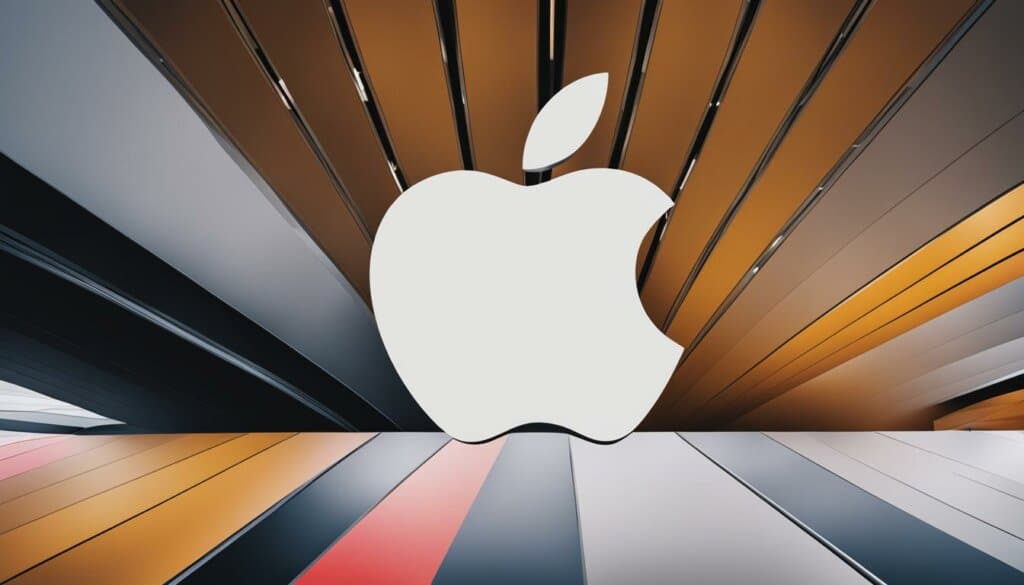
The Impact of Apple’s Innovations on the Tech Industry
Apple’s constant drive for innovation has had a profound impact on the tech industry. Through their groundbreaking hardware, software, and services, Apple has transformed the landscape of personal computing and set new standards for innovation.
One of Apple’s most significant contributions to the tech industry is the introduction of iconic products like the Apple II, Macintosh, iMac, and MacBook. These devices revolutionized personal computing, making it more accessible, intuitive, and aesthetically pleasing. Their sleek designs and powerful performance have inspired other companies in the industry and shaped consumer expectations.
Furthermore, Apple’s spatial computing technology, exemplified by products like the Apple Vision Pro, is pushing the boundaries of immersive experiences. By seamlessly blending digital content with the physical world, Apple is redefining how users interact and engage with technology. This innovation has the potential to revolutionize fields like gaming, education, and entertainment.
Apple’s operating systems, macOS, iOS, and iPadOS, have also played a crucial role in transforming the tech industry. These operating systems have set new standards for user interfaces, functionality, and seamless integration across devices. They have enabled users to seamlessly transition between their Macs, iPhones, and iPads, creating a cohesive and intuitive user experience.
In conclusion, Apple’s relentless pursuit of innovation has had a lasting impact on the tech industry. Their groundbreaking hardware, software, and services have transformed personal computing, inspired other companies, and shaped consumer expectations. With their spatial computing technology and cutting-edge operating systems, Apple continues to redefine the possibilities of technology.
The Impact of Apple’s Innovations:
| Hardware Innovations | Software Innovations | Services Innovations |
|---|---|---|
| Apple II: Revolutionized personal computing, making it more accessible and intuitive. | macOS, iOS, and iPadOS: Set new standards for user interfaces and functionality. | Apple Music: Reimagined the way people listen to music. |
| Macintosh: Popularized personal computers with its sleek design and powerful performance. | App Store: Catalyzed the growth of mobile app development and distribution. | Apple Pay: Transformed mobile payments and digital wallets. |
| iMac: Redefined the all-in-one computer with its groundbreaking design. | iCloud: Enabled seamless synchronization of data across devices. | Apple Arcade: Introduced a subscription service for premium games. |
| MacBook: Combined power, portability, and elegance in a single device. | ARKit: Pioneered augmented reality experiences on mobile devices. | Apple TV+: Disrupted the streaming industry with original content. |
Conclusion
Apple Inc. has a long history of innovation and has continuously pushed the boundaries of technology. With products like Apple Vision Pro and its groundbreaking operating systems, Apple has revolutionised personal computing. The company’s organisational model and leadership approach have fostered a culture of innovation and allowed Apple to stay ahead in a rapidly changing industry.
Apple’s impact on the tech industry is undeniable, and its commitment to innovation continues to drive its success. Through spatial computing and the development of visionary technology, Apple has redefined the possibilities of digital experiences. By seamlessly integrating the physical and digital worlds, Apple Vision Pro provides users with a new dimension of powerful and personal computing.
Apple is not only a pioneer in hardware and software, but also in organisational structure and leadership. By focusing on cross-functional collaboration and deep expertise, Apple has created a model that encourages innovation throughout the company. Apple’s innovation has not only shaped consumer expectations but has also inspired other companies in the tech industry to push the boundaries of what is possible.
As technology continues to evolve, Apple Inc. remains at the forefront of innovation. With its commitment to pushing boundaries and creating immersive experiences, Apple is set to shape the future of technology and redefine the way we interact with computing devices. With Apple Vision Pro and its continued dedication to spatial computing, Apple is poised to lead the industry into a new era of innovation and possibility.
FAQ
What is Apple Vision Pro?
Apple Vision Pro is a revolutionary spatial computer that seamlessly blends digital content with the physical world.
What features does Vision Pro offer?
Vision Pro features visionOS, the world’s first spatial operating system, and offers a user interface controlled by the user’s eyes, hands, and voice.
How many pixels does Vision Pro’s display system have?
Vision Pro has an ultra-high-resolution display system with 23 million pixels across two displays.
What can I do with Apple Vision Pro?
Apple Vision Pro brings a new dimension to powerful, personal computing, allowing users to be more productive, enjoy engaging entertainment experiences, and capture and relive memories.
What is visionOS?
visionOS is a revolutionary operating system designed for spatial computing, built on the foundation of macOS, iOS, and iPadOS.
What unique experiences does Vision Pro provide?
Immersive Environments and FaceTime on Vision Pro provide unique and interactive experiences.
Is there an App Store for Apple Vision Pro?
Yes, Apple Vision Pro has an all-new App Store for users to discover new apps.
How did Apple begin?
Apple was founded by Steve Jobs and Steve Wozniak, who shared an interest in electronics and attended the Homebrew Computer Club meetings.
What were some of Apple’s early products?
Apple’s early products included the Apple I and the Apple II, which became a bestseller and established Apple as a leading personal computer company.
What impact has Apple had on the tech industry?
Apple’s innovations in hardware, software, and services have had a significant impact on the tech industry, revolutionizing personal computing and shaping consumer expectations.

